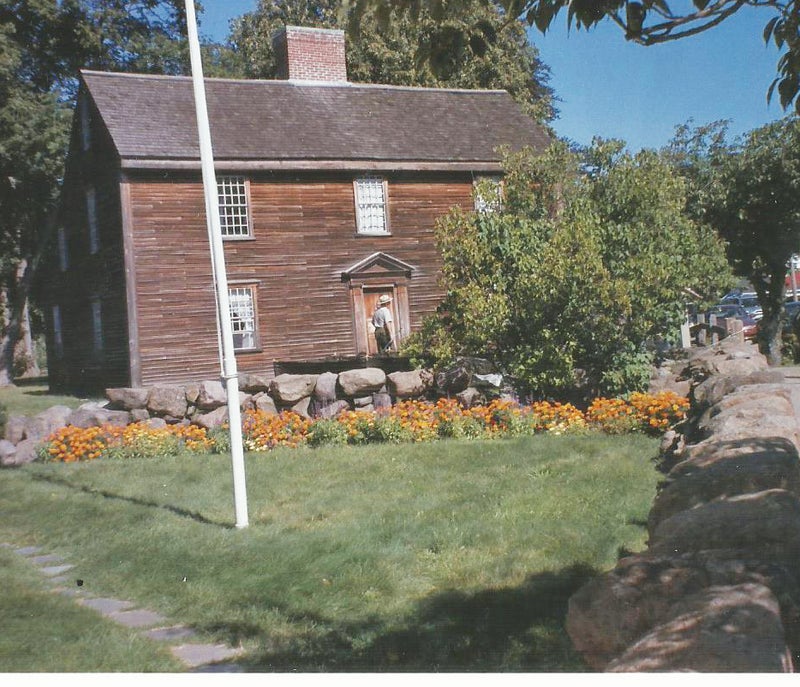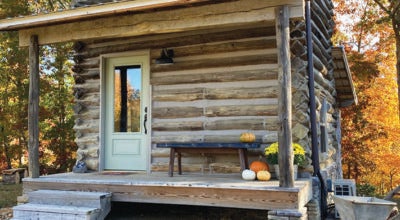Presidential Sites: Homes of Adams presidents restored and open to public
Published 9:00 am Thursday, December 16, 2021
|
Getting your Trinity Audio player ready...
|
By Betty Etchison West
For the Enterprise
If you are interested in visiting sites connected to the Presidents of the United States, you can visit the birthplaces of eight presidents in Virginia by traveling less than 400 miles.
Those presidents are George Washington, Thomas Jefferson, James Madison, James Monroe, William Henry Harrison, John Tyler, Zachary Taylor, and Woodrow Wilson.
If you want to visit the birthplace of the second and sixth presidents, you will have to journey more than twice that distance because the birthplaces of both John Adams and John Quincy Adams are in Quincy, Mass., 805.3 miles from Mocksville, North Carolina if you travel via I-95.
When John Adams and his son, John Quincy Adams, were born, the name of their birthplace was Braintree, Mass. The name of that town was changed from Braintree to Quincy in 1792, which was after the birth of John Adams and his son. (I like the name Braintree better than Quincy. I think it would be nice to be able to say, “I am from Braintree.”)
When John Adams was born in Braintree, the village had a population of 1,081 people. The house where John Adams was born as well as the house nearby where John Quincy Adams was born were on the 140-acre Adams Farm. If you visit those sites today, you will find that both houses are on a small plot of land in the city of Quincy, which now has a population of 101,636—quite a change since John Adams was born there on Oct. 30, 1735, and when John Quincy was born on July 11, 1767. Both the city of Quincy and John Quincy Adams were named for a prominent Massachusetts family.
When you visit Quincy, Mass., you can visit three houses connected to two presidents. The first you visit is John Adams’ birthplace, which was built in 1681, over 300 years ago. That house is best described in a book titled, “Cabins, Cottages and Mansions” by Nancy and Christopher Benbow, which says: “The house is a saltbox structure with a central chimney. It is framed with huge beams which are joined and secured by with pegs and it has two-foot-wide planks in the floor and brick-filled walls. It originally had two lower and two upper rooms, but John Adams’ father, Deacon John Adams, added a rear lean-to onto the house in 1744, expanding the space to into two more downstairs room and two small upstairs rooms as well as a large attic.” (It was truly amazing to walk through a house that was 300 years old.)
The house next door to John Adams’ birthplace, which was inherited by John Adams from his father, is a bit older than John’s birthplace. It was built 1663, so it was built about 18 years before the construction of the John Adams birthplace, but the houses are very much alike. The type of construction is the same and the furnishings in both are just the type that would have been used by the Adams’ families. Both of the houses are restored and are very interesting. It was to the 1663 house that John Adams brought his bride, Abigail Smith Adams, after their wedding in 1764. John and Abigail lived in that house until 1784. It was there that their son, who would become the sixth president, John Quincy Adams, was born in 1767. Through the years that the family lived in the 1663 house, John Adams was away from home a great deal of the time attending to affairs concerning the government. That meant that Abigail had to attend to the needs of the family and oversee the activity on the farm. She was a capable woman who seem to manage farm and family satisfactorily. John Adams was away from home during the Revolutionary War when the war came close enough to the Adams’ home that Abigail could hear the boom of the big guns. Even during that trying time, Abigail was able to manage without panicking. When John and Abigail were far apart, they stayed in touch by writing letters to each other. Many of those letters have survived, and they tell historians much about the Adams family and the society in which they lived.
After the Revolutionary War, John Adams was sent on a mission to Europe. Abigail was able to join him there. While in Europe, Abigail was able to convince John that they should have a bigger house. She remembered a house that she admired as a child and convinced her husband that they should buy it. They bought that house sight unseen which probably was not a wise move. When they returned to Quincy, they found that the house was not quite what Abigail remembered. It needed much repair and it was not big enough to suite Abigail Adams’ needs. For example, Abigail did not think the parlor was large enough to entertain friends, so she decided to enlarge it. She was told that she could not change the roof line of the house. To overcome that problem, she simply had the workmen dig down and make the floor lower so she could get the ceiling as high as she wanted it without changing the roof line —ingenuity on the part of that lady. Mrs. Adams also had the kitchen, which was separate from the house, connected to the house. Much of the work was done in Abigail Adams’ husband absence and sometimes without his knowledge. All of the work done on the house almost doubled its size.
When he was not elected to serve as President of the United States for a second term, Mr. Adams returned to “The Old House at Peacefield.” He spent a great deal of his time in the study which his wife had built for him on the second story of the house beside his bedroom. He read and corresponded with friends, one of whom was Thomas Jefferson. At one point Adams and Jefferson “parted ways” for some reason. Abigail Adams continued to correspond with Jefferson and was finally able to bring about a reconciliation between the two men. The two giants of early American history began to correspond with each other once again. Abigail Adams died about eight years before her husband so the correspondence with Jefferson, other friends, and family seemed to be about all John Adams had to comfort him. As John Adams lay dying, his last words were: “The Union survives; Jefferson still lives.” The whole truth was that Jefferson had died at his home, Monticello, earlier that morning of July 4, 1826. After John Adams death, his property was passed down to John Quincy Adams, who left it to his son, Charles Francis Adams. For about 100 years, family members lived at or at least owned “The Old House at Peacefield.”
In 1946, the Adams descendants conveyed all the properties to the American people. Today all of the Adams properties are administered by the National Park Service. Call 617-770-1175 for more information about the Adams properties and/or for an appointment.






